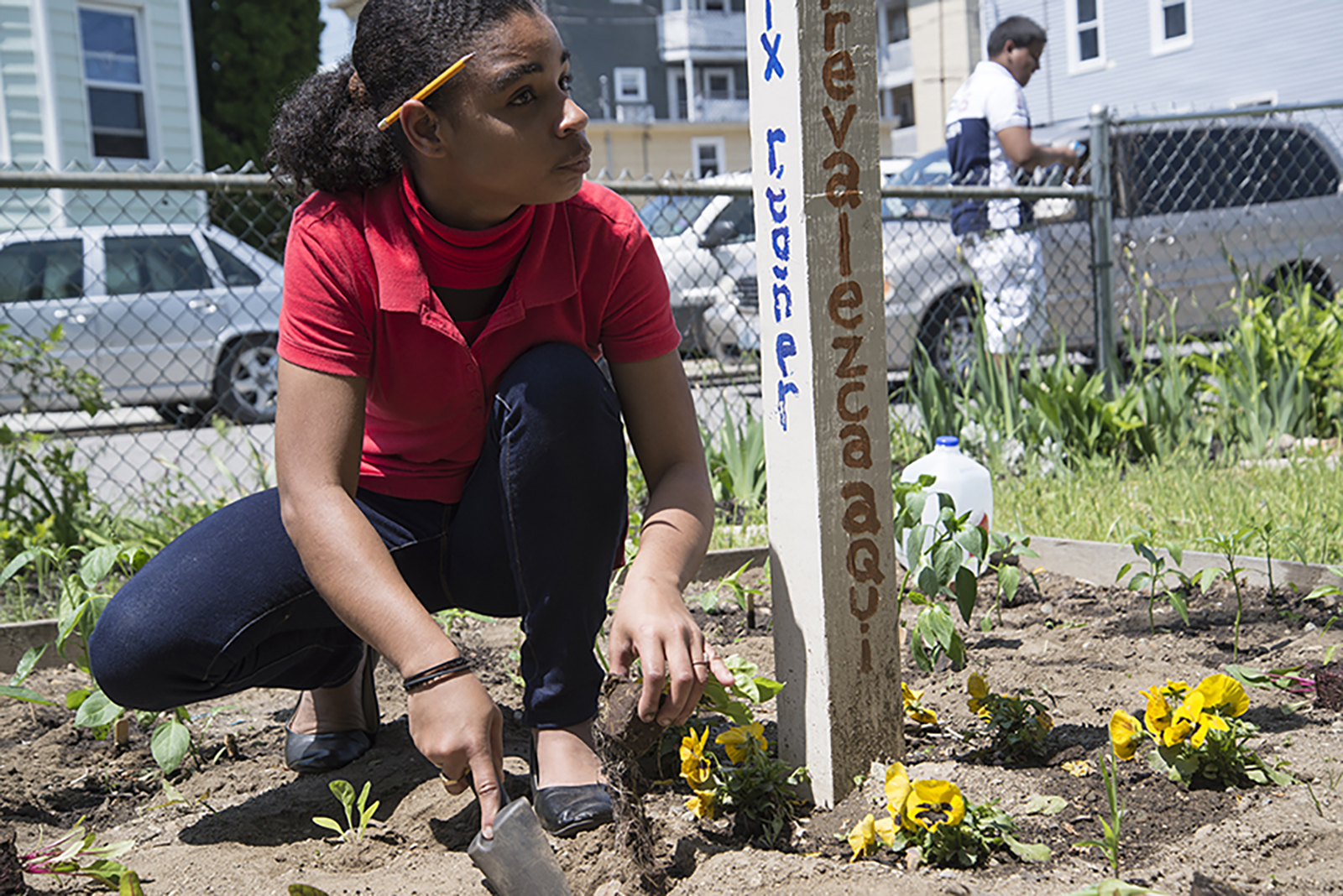Central Falls Building Greener Urban Landscape
September 5, 2016
CENTRAL FALLS, R.I. — Crammed into 1.3 square miles is a diverse community of 19,300 residents, lots of traffic and plenty of pavement. The most densely populated city in the smallest state also lacks green.
Central Falls has the lowest percentage of tree cover in Rhode Island. Over the years, the city has been defoliated, but don’t blame the caterpillars that have wreaked havoc on Rhode Island this year. Trees were cut down and green spaces ripped up to make room for more housing for a growing population.
Today, only 3 percent of Central Falls is green space, a problem Mayor James Diossa soon began addressing when he took office three years ago.
“Past administrations had never given priority or importance to the role of trees,” he told ecoRI News earlier this year during a tour of revitalized Jenks Park and a nearby community garden. “Trees are instrumental for a community.”
When Diossa took office in January 2013, it had been nearly three years since the city filed for receivership and nearly two years since it had filed for bankruptcy. Those challenges, however, didn’t prevent Diossa and his administration from implementing “Operation Tree Hugger.”
In December 2014, students from Calcutt Middle School and Scituate High School partnered with the city to develop a proposal for the America the Beautiful-Tree Rhode Island 2015-2016 grant program. The students’ proposal was funded. Four months later, on April 10, 2015, the students planted 14 trees around Calcutt Middle School and established the Central Falls Arboretum.
Since then, tree plantings haven’t stopped. Last year a group of local middle-school students planted 15 trees along Hunt Street. On National Arbor Day in April, six trees were planted in front of City Hall. A line item has been added to the budget to fund the planting and maintenance of the city’s slowly growing green space.
“We’ve been aggressive in planting trees in parks, along streets and in open spaces,” Diossa said. “The city’s green space had taken a hit.”
The city and its many partners, however, aren’t limiting new green to the tall variety. They are bringing back all kinds of vegetation. The 26th-most densely populated city in the country wants an urban jungle that features more than concrete, asphalt, steel and brick.
The community seems to have embraced its greening. The mayor noted that neighborhood volunteers water new plantings, weed, and keep a watchful eye on new green space.

The Central Falls Community Garden, at the intersection of Perry and Phillips streets, for instance is cared for by a host of people, including students, teachers, neighbors, and at least one City Council member and her husband.
Tia Ristaino-Siegel began volunteering at the community garden before she was elected to the council. When ecoRI News visited this urban garden in the spring, Central Falls High School students were planting eggplants, peppers and tomatoes in what, not so long ago, was a vacant lot.
“Some of these kids have never eaten a fresh tomato out of a garden,” Ristaino-Siegel said.
The plants, both vegetable and flower, are donated annually by Scituate High School, Providence-based Southside Community Land Trust and others. Non-edible plants ring the perimeter of the garden, to attract pollinators.
Besides growing healthy food that both students and helpful neighbors enjoy, the community garden also provides valuable educational opportunities, and not just the kind you would expect. On the day ecoRI News visited, English-as-a-second-language students were working and learning in the garden.
The students are required to keep a journal, in English, to track what is grown and how much, and write an essay about the garden’s importance, according to Central Falls High School teacher Kerri Valentine.
Of course, they also are learning that trees and urban vegetation save energy by providing shade that helps cool buildings; they improve air quality by removing carbon dioxide and other greenhouse gases from the atmosphere; their leaves and branches catch and hold pollutants before they can be swept into local waters; they reduce stormwater runoff by soaking up water; they help prevent erosion; they improve public health and community well-being; and they provide habitat for wildlife, insects and birds far better than asphalt, brick and concrete.




It shouldn’t be housing that’s blamed for a loss of green space. Street trees were torn up in Central Falls because of traffic engineers viewing them as "fixed hazards" to drivers. RIDOT had a pitched battle over whether to put new trees in on Dexter Street during the last repaving, and luckily decided to give in. When you go up and down Dexter, take note of the gaps in the buildings. Those were created by RIDOT in the 1980s, to provide for drivers.
Suburban areas that are nominally more green actually have a worse track record on impermeable space. Central Falls is the green leader on protecting our water quality from sewage overflow because of its housing density, not despite it. http://www.rifuture.org/not-all-impervious-surfaces-equal-when-it-comes-to-stormwater.html